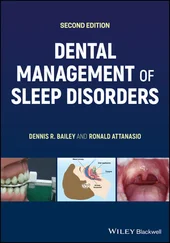Ronald J. Anderson - Introduction to Mechanical Vibrations
Здесь есть возможность читать онлайн «Ronald J. Anderson - Introduction to Mechanical Vibrations» — ознакомительный отрывок электронной книги совершенно бесплатно, а после прочтения отрывка купить полную версию. В некоторых случаях можно слушать аудио, скачать через торрент в формате fb2 и присутствует краткое содержание. Жанр: unrecognised, на английском языке. Описание произведения, (предисловие) а так же отзывы посетителей доступны на портале библиотеки ЛибКат.
- Название:Introduction to Mechanical Vibrations
- Автор:
- Жанр:
- Год:неизвестен
- ISBN:нет данных
- Рейтинг книги:4 / 5. Голосов: 1
-
Избранное:Добавить в избранное
- Отзывы:
-
Ваша оценка:
Introduction to Mechanical Vibrations: краткое содержание, описание и аннотация
Предлагаем к чтению аннотацию, описание, краткое содержание или предисловие (зависит от того, что написал сам автор книги «Introduction to Mechanical Vibrations»). Если вы не нашли необходимую информацию о книге — напишите в комментариях, мы постараемся отыскать её.
is a definitive resource. The text extensively covers foundational knowledge in the field and uses it to lead up to and include: finite elements, the inerter, Discrete Fourier Transforms, flow-induced vibrations, and self-excited oscillations in rail vehicles.
The text aims to accomplish two things in a single, introductory, semester-length, course in vibrations. The primary goal is to present the basics of vibrations in a manner that promotes understanding and interest while building a foundation of knowledge in the field. The secondary goal is to give students a good understanding of two topics that are ubiquitous in today's engineering workplace – finite element analysis (FEA) and Discrete Fourier Transforms (the DFT- most often seen in the form of the Fast Fourier Transform or FFT). FEA and FFT software tools are readily available to both students and practicing engineers and they need to be used with understanding and a degree of caution. While these two subjects fit nicely into vibrations, this book presents them in a way that emphasizes understanding of the underlying principles so that students are aware of both the power and the limitations of the methods.
In addition to covering all the topics that make up an introductory knowledge of vibrations, the book includes:
● End of chapter exercises to help students review key topics and definitions
● Access to sample data files, software, and animations via a dedicated website

 , the potential energy,
, the potential energy,  , of the system is determined simply by the vertical distance from
, of the system is determined simply by the vertical distance from  to the bead. This distance is
to the bead. This distance is  and, as the mass is below the datum, the potential energy is negative, leading to
and, as the mass is below the datum, the potential energy is negative, leading to
 and
and  and a single degree of freedom,
and a single degree of freedom,  , we can apply Lagrange's Equation ( Equation 1.16) and find
, we can apply Lagrange's Equation ( Equation 1.16) and find

 yields the same result as Equations 1.11and 1.15, the equation of motion derived using Newton's Laws.
yields the same result as Equations 1.11and 1.15, the equation of motion derived using Newton's Laws. but this would take away the ability to look at the individual terms and give a physical explanation for them. Whenever an equation is derived, the first test for correctness is to see if all of the terms have the same dimensions. In this case, the first term has dimensions of
but this would take away the ability to look at the individual terms and give a physical explanation for them. Whenever an equation is derived, the first test for correctness is to see if all of the terms have the same dimensions. In this case, the first term has dimensions of  where
where  is mass ,
is mass ,  is length , and
is length , and  is time . Note that angles such as
is time . Note that angles such as  are in radians, which are dimensionless since they are defined by an arc length divided by a radius. It follows that trigonometric functions such as
are in radians, which are dimensionless since they are defined by an arc length divided by a radius. It follows that trigonometric functions such as  and
and  are also dimensionless. Angular velocities therefore have dimensions derived from angles divided by time,
are also dimensionless. Angular velocities therefore have dimensions derived from angles divided by time,  , and angular accelerations are expressed as
, and angular accelerations are expressed as  . Using these conventions, it is easy to see that all three terms in Equation 1.23have the same dimensions 3 .
. Using these conventions, it is easy to see that all three terms in Equation 1.23have the same dimensions 3 . or mass times acceleration. Taking this into account, we can see that the three terms in Equation 1.23all have dimensions of
or mass times acceleration. Taking this into account, we can see that the three terms in Equation 1.23all have dimensions of  or force times length. The terms are, in fact, all moments. The third term is the most obvious because it contains the gravity force
or force times length. The terms are, in fact, all moments. The third term is the most obvious because it contains the gravity force  multiplied by a moment arm of
multiplied by a moment arm of  . The moment arm is simply the horizontal distance between the mass and point
. The moment arm is simply the horizontal distance between the mass and point  . Lagrange's Equation has produced an equation of motion based on a dynamic moment balance about the stationary point
. Lagrange's Equation has produced an equation of motion based on a dynamic moment balance about the stationary point  and it did so without requiring the derivation of acceleration expressions, the drawing of free body diagrams, or the production of force and moment balance relationships. This is the power of using Lagrange's Equation for deriving equations of motion.
and it did so without requiring the derivation of acceleration expressions, the drawing of free body diagrams, or the production of force and moment balance relationships. This is the power of using Lagrange's Equation for deriving equations of motion. generalized coordinates (
generalized coordinates (  ), any generalized coordinate,
), any generalized coordinate,  , must be able to undergo an arbitrary small variation,
, must be able to undergo an arbitrary small variation,  , with all of the other generalized coordinates being held constant.
, with all of the other generalized coordinates being held constant. and the horizontal distance from
and the horizontal distance from  . We would soon find that these coordinates are not independent because the bead is constrained to stay on the circular wire so changing the horizontal position requires a change in the vertical position. These two coordinates are therefore not generalized coordinates.
. We would soon find that these coordinates are not independent because the bead is constrained to stay on the circular wire so changing the horizontal position requires a change in the vertical position. These two coordinates are therefore not generalized coordinates.










